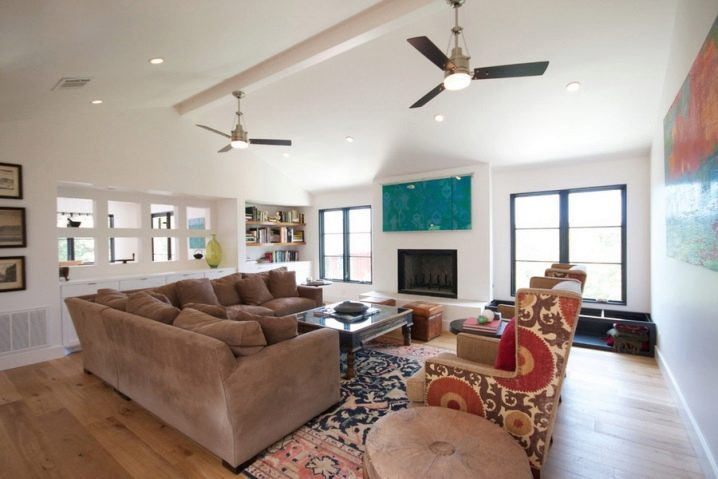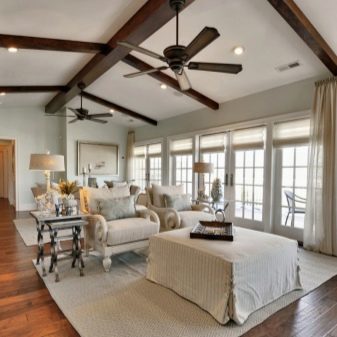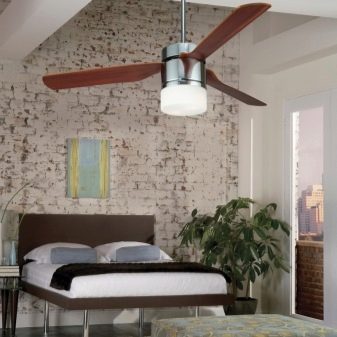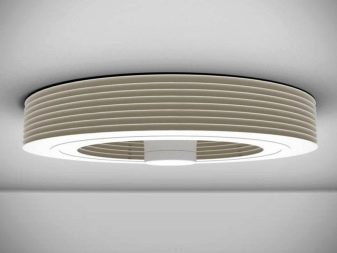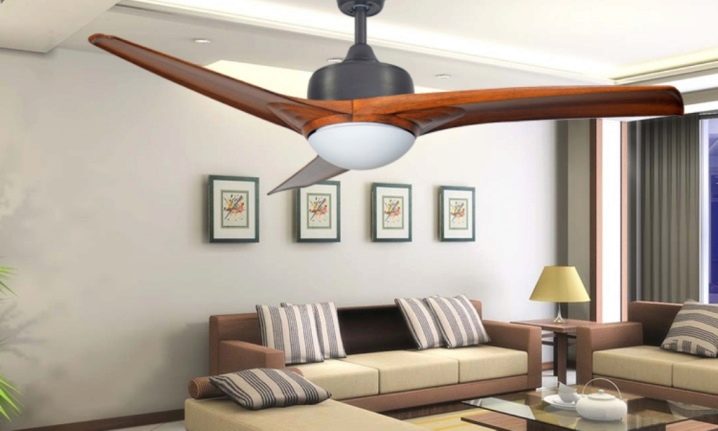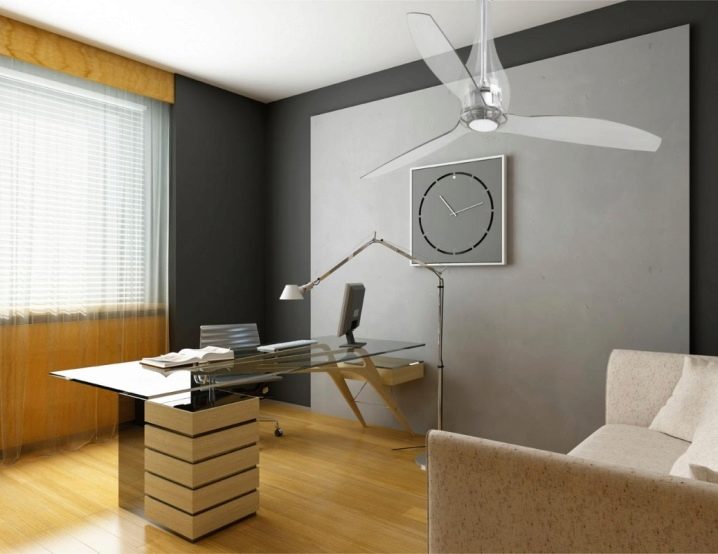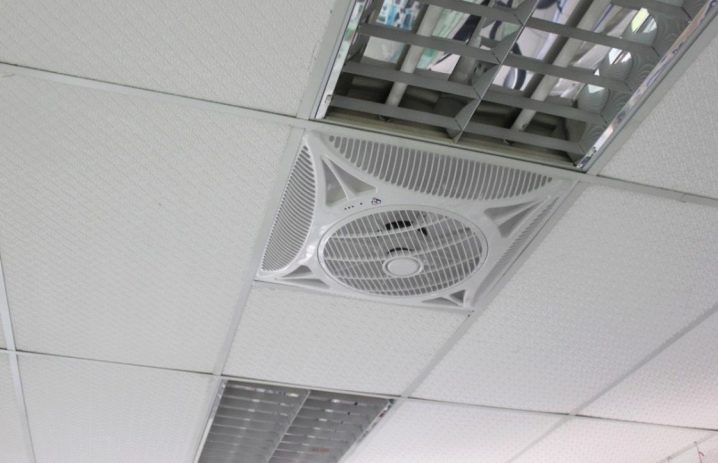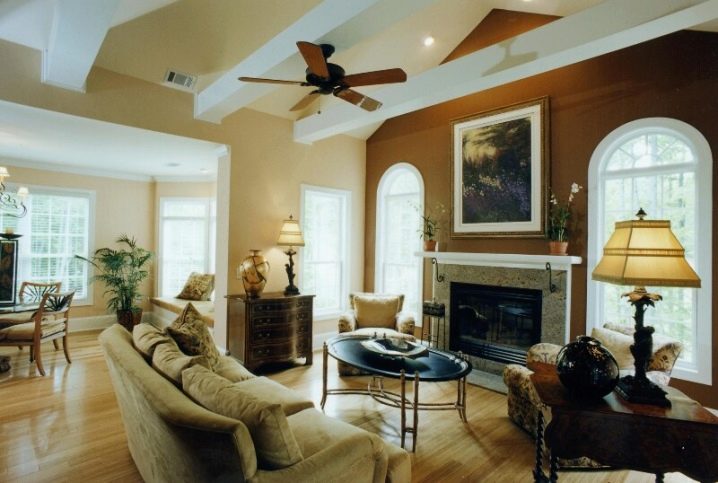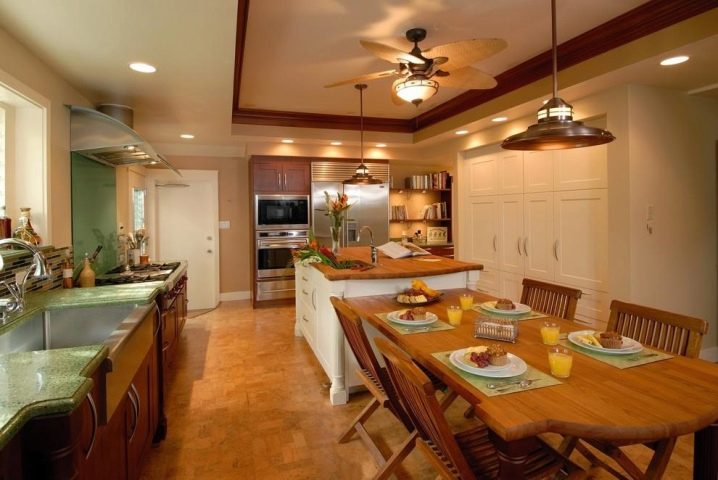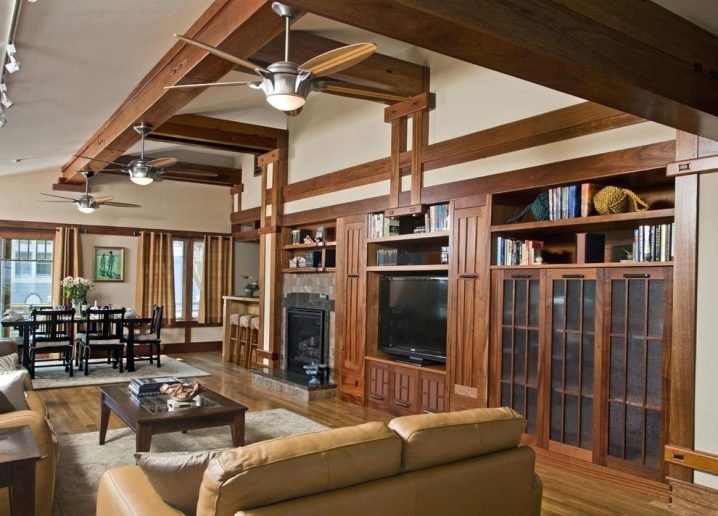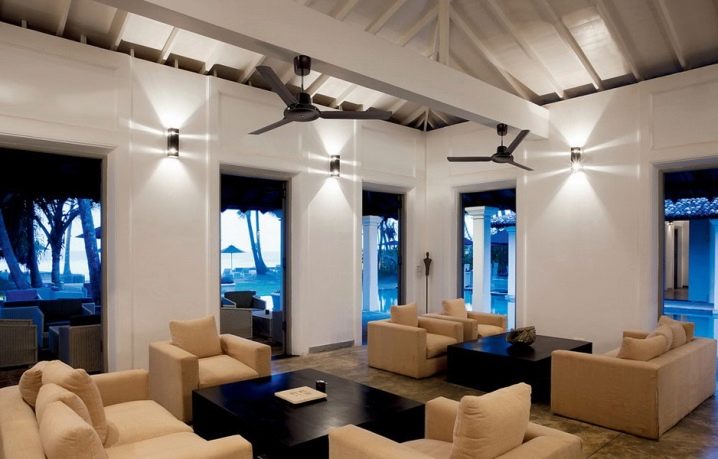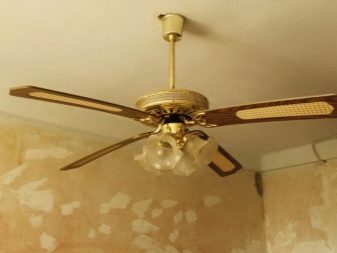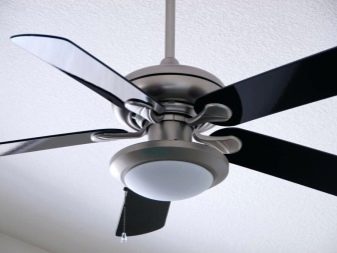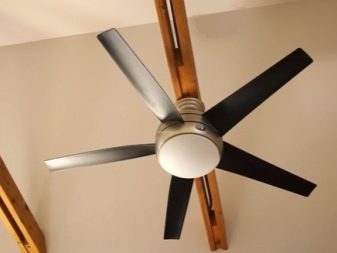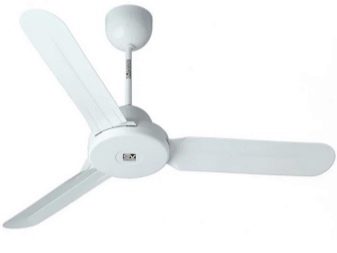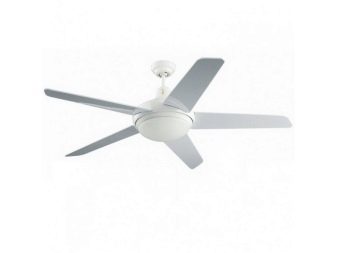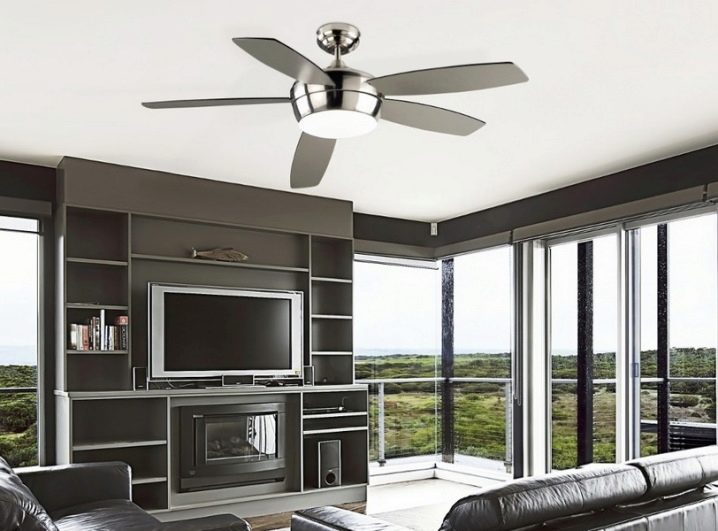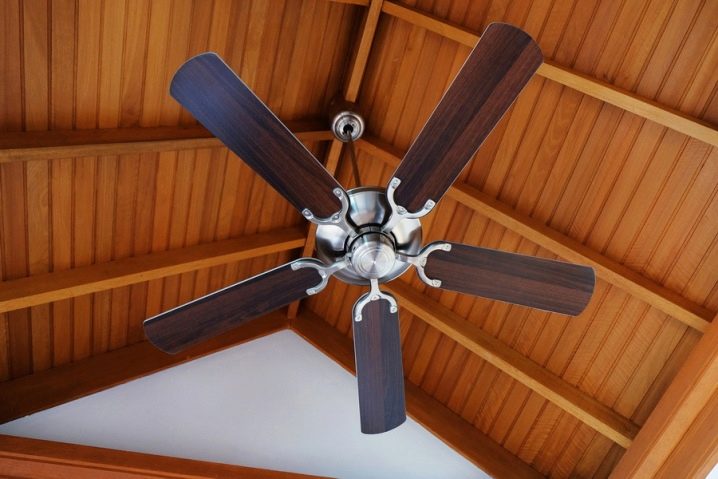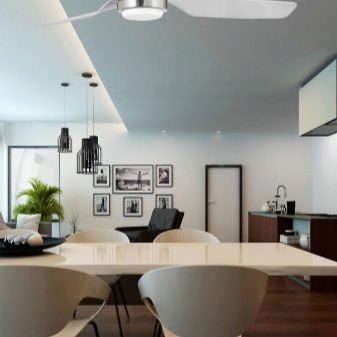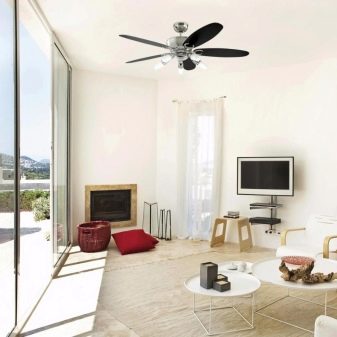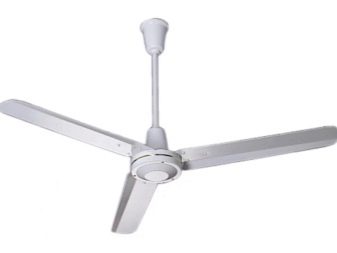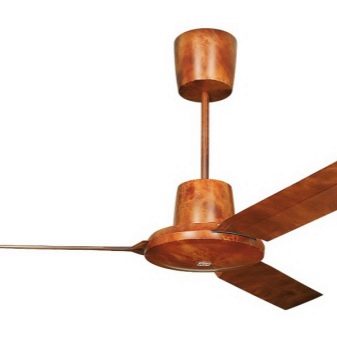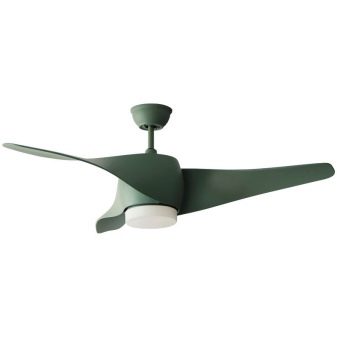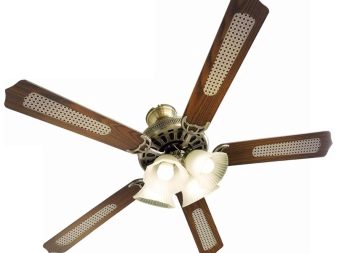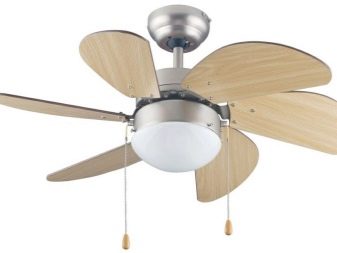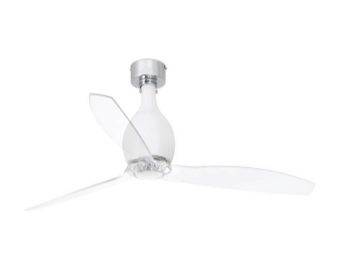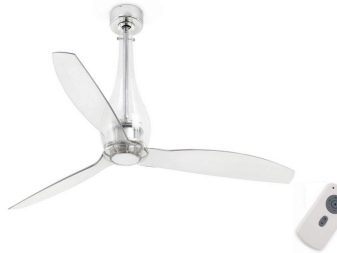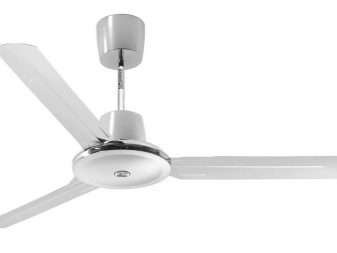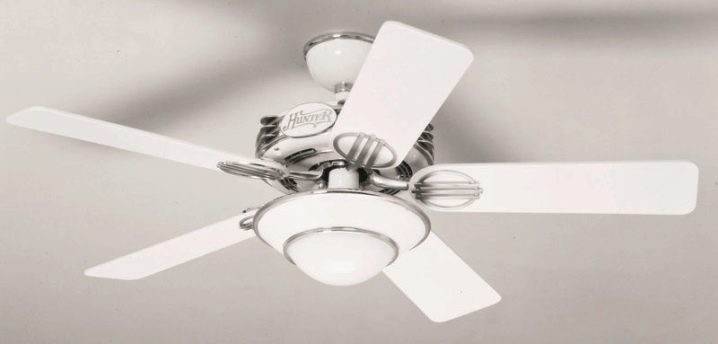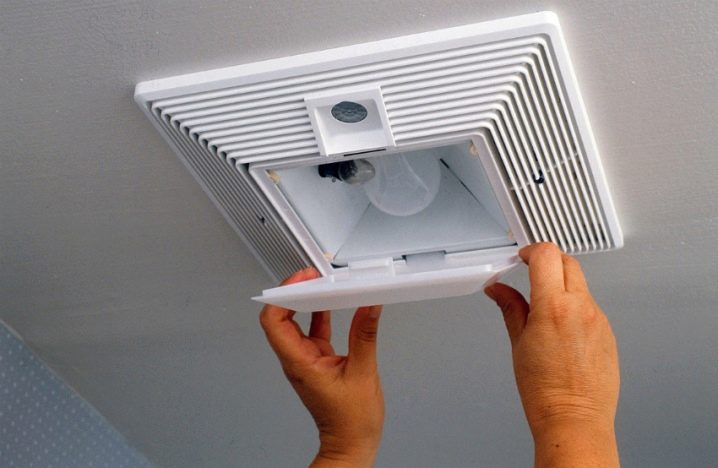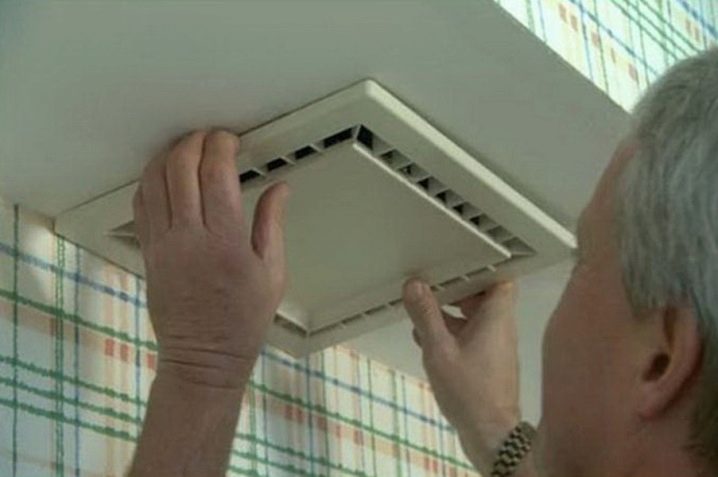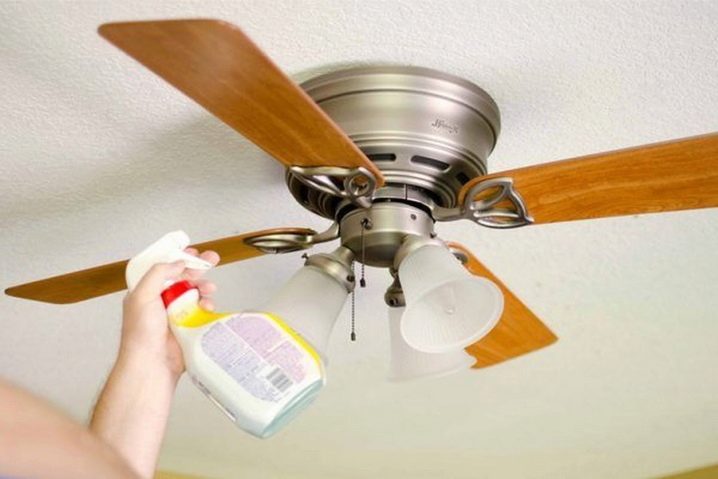Ceiling fans: types, subtleties of choice and operation
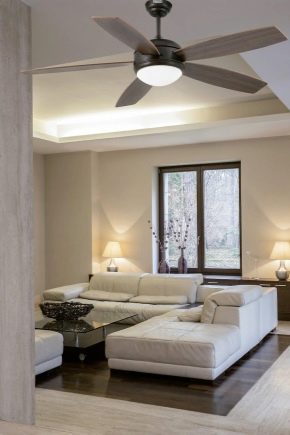
Ceiling fan is considered a reliable, proven means for efficient air cooling and is an excellent alternative to expensive air conditioning systems. Despite the fact that the devices are quite popular and in demand around the world, in Russia they have not yet found wide application and are just beginning to conquer the market.
Device and principle of operation
The first ceiling fan appeared in 1860 in the USA and was a two-blade device that was attached to the ceiling and was a real salvation from the heat. Today, ceiling fans are available in two designs.
- The first type is represented by axial models, the principle of action of which is reduced to the capture of air masses by means of an impeller and their further advancement along the axis of rotation. In this case, the intensity of the passage of air flow is provided by a positive angle of attack of the incident blades.
- Centrifugal models work differently. In such devices, the air is captured by the oncoming blades and, under the action of centrifugal force, is pushed out in the radial direction relative to the axis.
According to their functional purpose, ceiling fans are paddle and exhaust.
- Blade models consist of an electric motor, a plastic or metal body and an impeller including an axle and blades. The fan is fixed to the ceiling by means of a strip, which is a decorative overlay and closes the fixing mechanism. In addition, many models are equipped with a remote control function and are equipped with a remote control and switches.
- Exhaust devices also consist of an impeller and an electric motor and are additionally equipped with a decorative grille covering the working parts of the device.
The principles of operation of the ceiling fan and air conditioner are fundamentally different from each other. And if the air conditioner provides a decrease in the internal air temperature to a predetermined value, then when the fan is running, this indicator remains unchanged. The cooling function of the device due to its ability to create a continuous flow of air, which provides enhanced evaporation of moisture from human skin and does not allow the body to overheat.
Preservation of a stable temperature regime is achieved due to mixing of cold descending flows with warm masses going to the ceiling. For the ability to mix multidirectional air flow within the same room, the ceiling fans are called mixing. However, in order to mix sufficiently impressive air volumes, powerful work and a large swing of the blades are required, due to which many devices are equipped with folding blades.
The second type of ceiling fans is represented by exhaust devices, the principle of action of which is as follows: a device installed in the ventilation duct, removes the exhaust air to the outside.As a result, a low-pressure zone is formed inside the room, which contributes to the active influx of fresh air masses into the discharged space of the room. The air begins to be drawn in through the vents, windows and intake channels, so that in a short period of time there is a complete replacement of the entire air volume of the room.
Some high-tech models are equipped with an impeller with an adjustable paddle pitch. Thanks to this design feature, it is possible to simultaneously change the angle of attack of the blades without stopping the electric motor. This contributes to a significant reduction in noise in the room and allows for more accurate control over the intensity and direction of air jets. In addition, many models are combined in a single unit with lighting devices, which significantly increases the functionality of ceiling fans.
The work of ceiling appliances is carried out in the summer and winter modes. In the first case, the fan serves to cool people in the room, while in the second it contributes to a more uniform distribution of hot air during space heating with convector systems.Devices have a high level of protection IP 65, which allows you to install them in kitchens, bathrooms, showers and other rooms with high humidity. In addition, unlike air conditioners, suspended fans can be installed on outdoor terraces and outdoor verandas. The noise level of most models does not exceed 30 dB.
Advantages and disadvantages
The growing popularity of ceiling fans due to a number of indisputable advantages of these devices.
- Low, in comparison with air conditioners, the cost allows you to equip the room with an effective cooling device, significantly saving money. The cost of devices varies from 4 to 18 thousand rubles and depends on the functionality and power of the device.
- Complete harmlessness to people's health also distinguishes ceiling models from air conditioning systems. Under the fan it is impossible to freeze and catch a cold, which allows you to install appliances in children's rooms and bedrooms.
- Many modern models are equipped with auto-reverse and motion sensors, which allow starting the electric motor only when a person appears in the room.This reduces the running time of the fan to idle and significantly reduce energy costs.
- Simplicity of installation allows you to install the device yourself, without resorting to the use of special equipment and the invitation of experts. In addition, the installation does not require permission from the relevant organizations.
- The combination of the fan and the lighting device in one device significantly expands the scope of use of the unit and increases its popularity.
- A wide range of models with a wide variety of design options and colors greatly facilitates the selection and allows you to purchase the product for any interior style.
- Due to the possibility of installing fans on the summer terraces and cafes, the level of comfortable stay in them is greatly increased.
- Ceiling models, unlike wall and floor, do not take up much space and harmoniously fit into the interior. About such a device can not be injured, which is especially important if there are young children and pets in the house.
- Exhaust fans are able to quickly replace the entire volume of air in the room and save it from the unpleasant smell of burning and dampness.
The disadvantages of ceiling models include rapid wear of the impeller, as well as the need for regular hygienic procedures for washing and cleaning blades from dust, pet hair and hair. In addition, some models produce a certain noise when operating, which, however, is partially eliminated by adjusting the angle of attack of the blades and balancing.
Kinds
One of the main criteria for the classification of ceiling fans is their functional purpose or, in other words, the installation site. On this basis, there are four types of devices.
- Universal models are designed for installation in the premises for any purpose, as well as on the outdoor verandas of summer cafes and terraces. Products are often equipped with a remote control, a lighting device and can be used both for cooling in the summer months and for circulating warm air in the winter.
- Household fans are designed for installation in apartments. Devices have average power, often combined with a chandelier and produce little noise. In addition, household models have a beautiful design and are able to revive any interior.
- Outdoor models are equipped with increased protection against moisture and are highly resistant to extreme temperatures. Such devices, along with universal ones, are designed for work in the conditions of the street and are distinguished by an anti-corrosion coating, high power and long service life.
- Industrial devices are characterized by increased power and large working life. Fans of this type are installed in factory workshops, shopping centers and public places with the simultaneous presence of a large number of people. Models, as a rule, do not have designer delights and are made in a concise style. In their production, special attention is paid to functional qualities, and the decorative component fades into the background.
How to choose?
The main criterion when choosing a ceiling fan is its power. The amount of air that is processed by each blade per unit of time depends on the value of this indicator. To accurately calculate the required power, you should use the universal formula: P = Sx2, where P denotes the power of the device in watts and S is the area of the room in square meters.
After the required power is determined, you can proceed to the choice of the size, which indicates the size of the blades and is indicated in inches. So, for a small room with an area of 9 m2, a 30-inch fan will be sufficient, the blade span of which is 762 mm. Fans of medium size with 42´´ impeller or 1066 mm, are designed for spacious bedrooms and children's rooms of 16 m2. In large rooms with an area of more than 32 m2, models with blades of 52´´ should be chosen, which corresponds to 1320 mm.
The next selection criterion is the presence of additional functions. The most convenient in operation are models with the ability to control the intensity of blowing and are able to smoothly or stepwise change the speed of rotation of the impeller. Often such devices have a remote control and are equipped with a remote control. Some high-tech devices are equipped with electronic timers that allow you to program the engine for a day or even a week. So, in hot daytime hours, the fan will operate at maximum speed, in the evening - at moderate speeds, and at night it will automatically switch to standby mode.
Motion and humidity sensors are also quite convenient options.They save energy by starting the fan only in the presence of people, and also automatically turn on the device when the humidity level rises above the set mark. In addition, many devices are equipped with ionizing radiation sources and flavors that saturate the air in the room with negative ions and a pleasant smell.
Popular models and reviews
The modern market of ventilation and exhaust equipment represents a wide range of models. Most instruments meet high performance requirements and has a lot of positive feedback, but some of them want to highlight separately.
- German fans Helios Ventilatoren familiar to domestic consumers. Products differ in durability of a design and durability of mechanisms, have stylish appearance and can be used both in summertime, and in the winter period. In addition, the units consume little power, which compares favorably with other known analogues. In the process, the devices practically do not produce noise and do not vibrate.
- Nordic Italian fans They have only four blades and are distinguished by high performance, quiet operation and a large working resource. Many models are combined with a chandelier and are equipped with a remote control.
- Russian ceiling fans Olympic Star are deservedly popular not only in Russia, but also in neighboring countries. The models are distinguished by a patinated case, the color of which resembles an aged gilding, and blades with a wood texture. The instruments have a five-blade design and are combined with a chandelier consisting of five lampshades. And the lighting can work both independently from the fan, and at the same time with it. For all manufactured products, the manufacturer provides a one-year warranty, but with proper installation and careful operation, the devices can last up to 10 years.
- Spanish Mini Eter models can operate in six speeds, they are equipped with a remote control, combined with a single lamp and have a two-year warranty. Due to its low weight, which reaches only 5.3 kg, the devices are easy to install and can be installed on light ceilings of open verandas and terraces.
- Italian model Vortice Nordik Evolution 120 closes the top five and has a simple, concise design and long service life. Power devices reaches 72 W, which allows you to install them in spacious living rooms and halls of up to 35 squares.
The models listed above are most often mentioned in reviews from Russian consumers. There is a reasonable cost of devices, which ranges from 4 to 15 thousand rubles, attractive appearance and long service life. Attention is paid to the presence of additional options, such as remote control, built-in lamp and the ability to change the operating modes. Among the disadvantages are the low availability of spare parts for foreign models and the large weight of some devices. For example, the Vortice Nordik Evolution 120 fan weighs 7 kg, which imposes certain requirements for reinforcing fasteners when installing devices on tension and suspended ceiling structures.
Installation
Trouble-free and safe operation of the fan depends largely on its proper installation. This is due to the fact that an improperly fixed device will create significant vibration and produce a lot of noise. Therefore, before you install the device with your own hands, you need to familiarize yourself with the instructions and clearly follow the wiring diagram.
- It is necessary to understand that for the equipment of the mounting bracket you should use at least 4 mounting holes, otherwise, due to the high dynamic load, the device will quickly loosen the fasteners and begin to vibrate vigorously. In addition, the instrument body should be attached to the mounting bracket by means of movable swivel joints, while leaving small gaps.
- Plays an important role and place of installation. For a more uniform redistribution of air masses around the room, it is recommended to install the fan exactly in the middle of the room, and if it is used to service the local area, installation should be done in the center of this area. Special attention should be paid to the height of the instrument. For the safe operation of the fan, the distance from the floor to the blades should not be less than 210 cm.
Reducing the recommended distance may not only affect the safety of the instrument. The lower blades are located above the floor,the lower the performance of each of them and the longer it takes to completely replace the air volume when using exhaust models. However, too close position of the impeller to the ceiling is also undesirable, especially with regard to fabric stretch ceilings: during prolonged operation of the blades the fabric does not withstand the constant effects of vibration and quickly breaks.
- When installing fans in high spaces or attic with sloping roofs, it is recommended to use an extension rod and position the units so that from the impeller to the ceiling 2.4-2.8 meters are obtained.
- When installing on reinforced concrete foundations, it is recommended to use dowels and self-tapping screws, while installing on tension or suspended structures it is necessary to use remote spacers connecting the mounting brackets with capital overlap.
- The final stage of the installation will be connecting the fan terminals to the electrical network. To do this, you need to connect the brown wire to the clip L, the blue wire to the clip N, and connect the yellow-green wire to the screw with the PE sign, which means protective grounding.After the installation of the fan is completed, it is necessary to test all modes of operation and test the operation of the remote control. If all the installation steps are done correctly, then problems with the trial run should not arise.
Care and Maintenance Tips
The fan is a complex electrical appliance, so its repair must be carried out by specialists of service centers. However, it is still possible to extend the life of the device and ensure its stable operation over a long period of time. To this end, it is necessary to observe a number of recommendations given by the masters in repair of ventilation equipment, and service the device in time.
- So, one of the most frequent problems in the fan is a strong vibration and high noise level. In some cases, the device starts to buzz and roar threateningly. The reason for this behavior of the device is the imbalance of the blade unit. You can eliminate this problem yourself, and the first step will be to purchase a repair balancing kit consisting of self-adhesive weights and weight clamps.
- Next, you need to check how reliable is the connection between the blades and the rotating hub located on the shaft of the electric motor. Loosen threads should be tightened with a screwdriver or hex.
- The next step will be the measurement of the distance from the end of each of the blades to the ceiling. If deviations are detected, the problem blade should be leveled, after which the fastening screws should be tightened.
- Then you need to alternately put on the weight clamp on each blade and turn on the device. In the case of reduced vibration, you should either attach another clip, or begin to gradually move the first one.
- It is necessary to move the clamp along the blade in the direction from the middle to the tail end. Manipulations should continue until the vibration disappears. Then you need to unhook the weight clamp and strictly in its place glue the self-adhesive metal weight. The balancing of the blades of the exhaust fans is carried out according to the same principle, with the exception that the loads with clips must be smaller.
- You should also remember that the imbalance of the blade block can occur as the uneven accumulation of fat and dust on the surface of the blades.Therefore, you must regularly clean the fan of dirt and soot, using any detergent.
With proper selection, proper installation and careful use of a ceiling fan can serve for many years, pleasing their owners.
How to install a ceiling fan do it yourself, see the next video.
